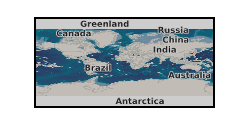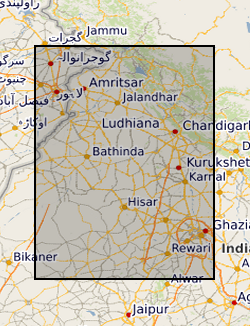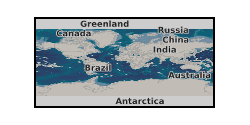Text files
Type of resources
Topics
Keywords
Contact for the resource
Provided by
Years
Formats
Representation types
Update frequencies
-

The thermal state of marine sediments controls a range of potential dehydration reactions as sediments are subducted. In thick sediment sections it is possible that reactions that would normally occur within a subduction zone start offshore of the deformation front. This scenario may be occurring at the Sumatra subduction zone (e.g. Geersen et al., 2013; Huepers et al., 2017). We have investigated this possibility by modelling the thermal and depth history of sediments offshore Sumatra. We have used a range of different assumptions about how the sediments decompact with depth, as well as testing the dependence on the seismic velocities used for depth conversion of the horizons.
-

Groundwater level measurements collected by the state groundwater boards of Punjab and Haryana states, India, and by the Central Groundwater Board. The data consist of well locations and measurements of groundwater levels, in metres below the top of the well casing. Data were collected in both the pre-monsoon (May-June) and post-monsoon (October-November) periods. Data availability is irregular across the entire suite of wells.
-

MFIX (Multiphase Flow with Interphase eXchanges) simulation input files and results of simulation of fragmentation-induced fluidization, and laboratory analyses of volcanic pyroclastic density current material. The data consists of: 1) the Fortran90 input files for the MFIX (Multiphase Flow with Interphase eXchanges) TFM simulation runs, 2) the postprocessed MFIX results from our simulations present within Excel sheets 3) laboratory results on the particle shape, size distribution and porosity of the volcanic granular mixtures, presented within Excel sheets. The dataset presented was gathered to investigate the role of compaction, resulting from particle fragmentation, within volcanic granular flows known as pyroclastic density currents. The presented results were obtained from a combination of laboratory analyses and numerical modelling, using Computational Fluid Dynamics. In the laboratory, characterization of the particle size distributions and shape of volcanic grains was undertaken to understand their packing properties. Using the Two-Fluid Model (TFM), an Eulerian-Eulerian method, I was able to simulate the effect of particle breakage on natural scale volcanic mixtures. This model supports a broad range of capabilities for dense multiphase flow. The code was used to investigate the role of particle breakage in pyroclastic density currents, which alters the maximum packing of the granular mixture and ultimately the concentration of the flow during transport. Because the solid phase is immersed in air, the code allowed me to simulate the self-fluidization of the volcanic mixture and the effect on its flowability. These simulations enable me to propose a new process that can play a large role in the occurrence of long runout deadly pyroclastic density currents: Fragmentation-Induced Fluidization. The laboratory work was conducted at the University of Oregon (USA) while the numerical work was completed by running the simulations on the UKRI ARCHER2 HPC and the Talapas Cluster from the University of Oregon (US). The data processing was ongoing from August 2021 to December 2021 (Lab analyses) and February 2022 to August 2022 (HPC work). The MFIX simulation results have been post-processed using ParaView open-source software but can be reproduced by the user using the MFIX custom-changed subroutines and input files contained within the dataset. The data was collected to test the hypothesis that compaction, and subsequent self-fluidization is key to the long-runout of pyroclastic density currents. Specialized audience that work on granular media and volcanic flows. The MFIX code that is modified from the core code from the Department of Energy (DOE) is all present. The missing core code can be downloaded from the DOE department https://mfix.netl.doe.gov/. All the experimental data from lab experiments are presented.
 BGS Data Catalogue
BGS Data Catalogue